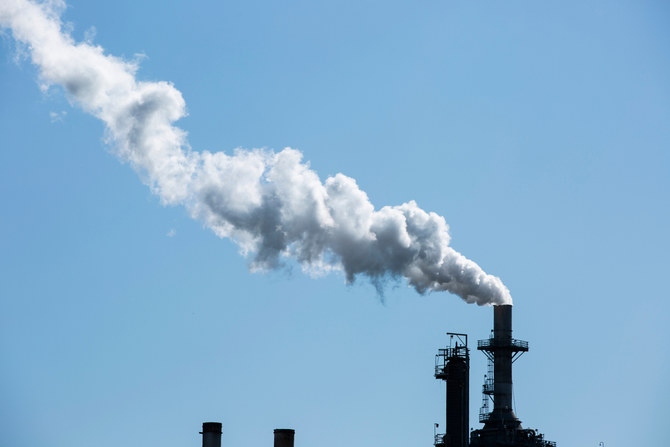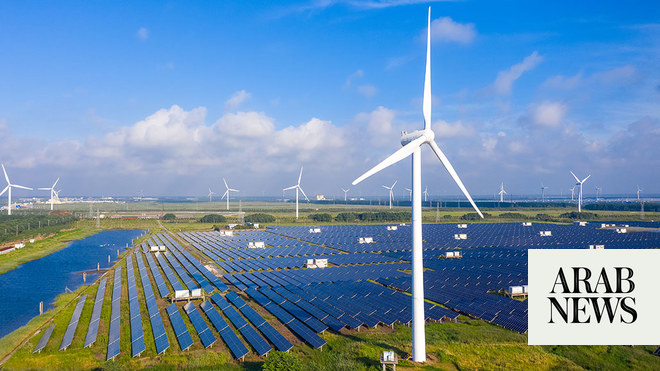
RIYADH: Global methane emissions from the energy sector will drop after reaching a near-record high in 2023, driven by new policies and COP28 pledges, showed a recent report.
In its latest study, the International Energy Agency said that the production and use of fossil fuels resulted in close to 120 million tonnes of methane emissions in 2023, a marginal increase compared to 2022.
The natural gas is responsible for around 30 percent of the rise in temperatures since the industrial revolution, and rapid and sustained reductions in methane emissions are key to limiting near-term global warming and improving air quality, noted IEA.
The energy think tank highlighted that the top 10 emitting countries were responsible for around 80 million tonness of gas discharge from fossil fuels in 2023, with the US leading the list, followed by Russia and Iran.
In its report, the IEA added that methane emissions from fossil fuels need to decline by 75 percent by the end of this decade to meet the climate goals outlined in the Paris Agreement – an international treaty on climate change that was produced in 2015 and compels signatories to work toward limiting the global temperature increase to 1.5 degrees Celsius above pre-industrial levels.
Fatih Birol, executive director of the IEA, said: “A 75 percent cut in methane emissions from fossil fuels by 2030 is imperative to stop the planet from warming to a dangerous level. I am encouraged by the momentum we’ve seen in recent months, which our analysis shows could make an enormous and immediate difference in the world’s fight against climate change.”
He added: “Now, we must focus on transforming commitments into action — while continuing to aim higher.”
Birol further noted that governmental policies and existing technologies possess the capabilities to reduce methane emissions globally.
“The IEA stands ready to help the energy sector meet its goals by deploying these measures, and we will continue to monitor progress — a key part of our wider efforts to ensure countries deliver on the energy promises they made at COP28,” noted Birol.
IEA added that $170 billion in spending is needed to deliver the methane abatement measures deployed by the fossil fuel industry by 2030. This includes $100 billion of spending in the oil and gas sector and $70 billion in the coal industry.
According to the energy agency, fossil fuel companies should carry the primary responsibility for financing these abatement measures, given that the amount of spending needed represents less than 5 percent of the income the industry generated in 2023.
The study also underscored the role of the UN climate change conference held in Dubai in at the end of 2023, known as COP28, in reducing global methane emissions in the coming years.
IEA said that nearly 200 governments agreed to reduce methane emissions by 2030, while significant regulatory initiatives were announced by Canada, the EU and the US during the time of the summit.
The think tnak added that several companies in the energy sector also pledged to reduce methane emissions during COP28.
The report also noted that deploying satellites that monitor gas leaks has helped identify and address them effectively.
“If all methane pledges made by countries and companies to date are implemented in full and on time, it would be sufficient to cut methane emissions from fossil fuels by 50 percent by 2030,” said the energy agency.
It added: “The Oil and Gas Decarbonization Charter launched at COP28 is an industry initiative focussed on climate action across the oil and gas sector. A total of 52 companies have joined and they aim to achieve net zero scope one and two greenhouse gas emissions from their operations by 2050 at the latest, to end routine flaring by 2030, and to achieve near-zero upstream methane emissions by 2030.”
Scope one entails “direct emissions” from sources that are owned or controlled by the company, while scope two denotes substances released into the atmosphere from the use of purchased energy.
These emissions are also known as indirect gasses, as the actual exhaust is generated at another facility, such as a power station.












